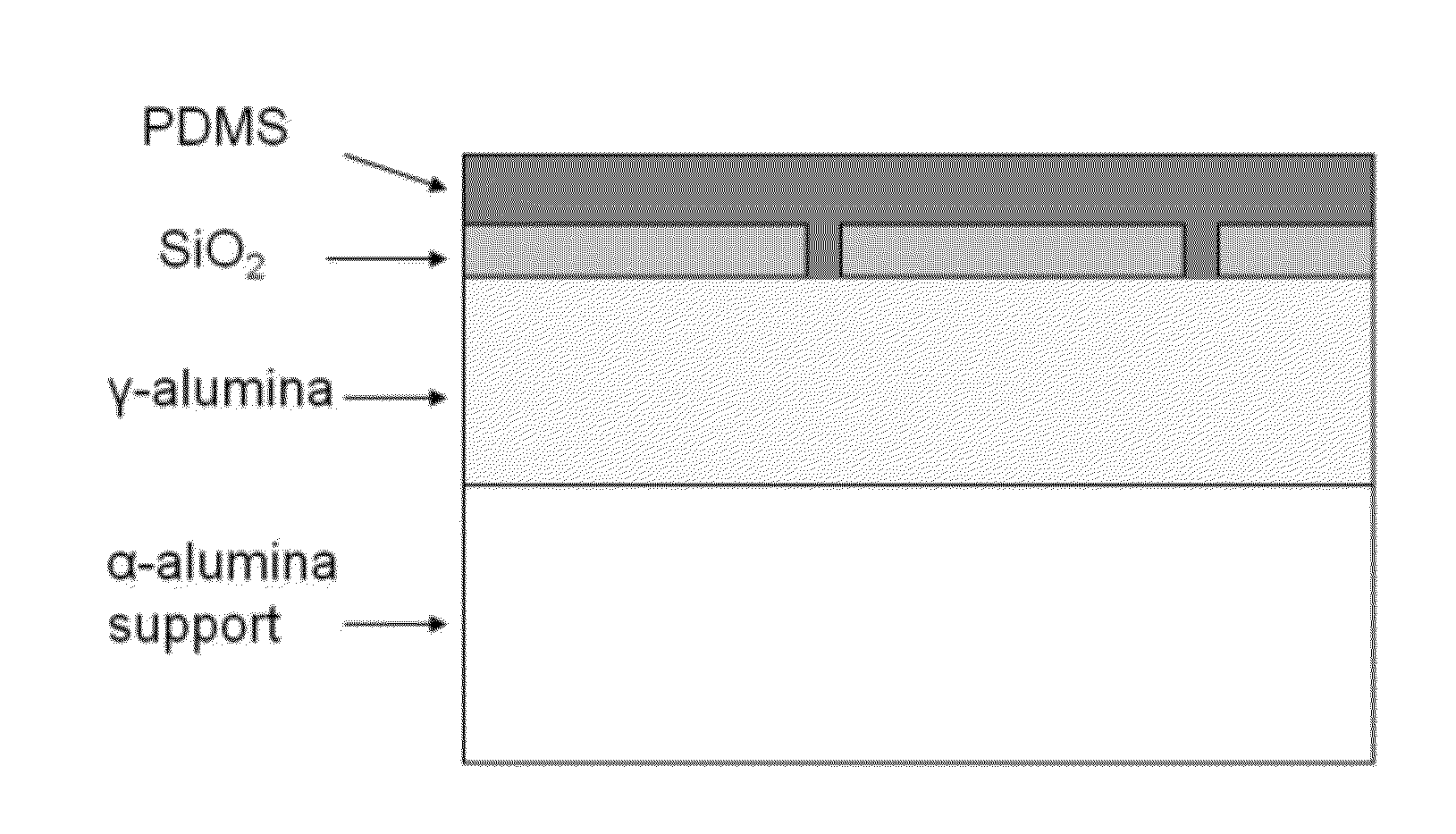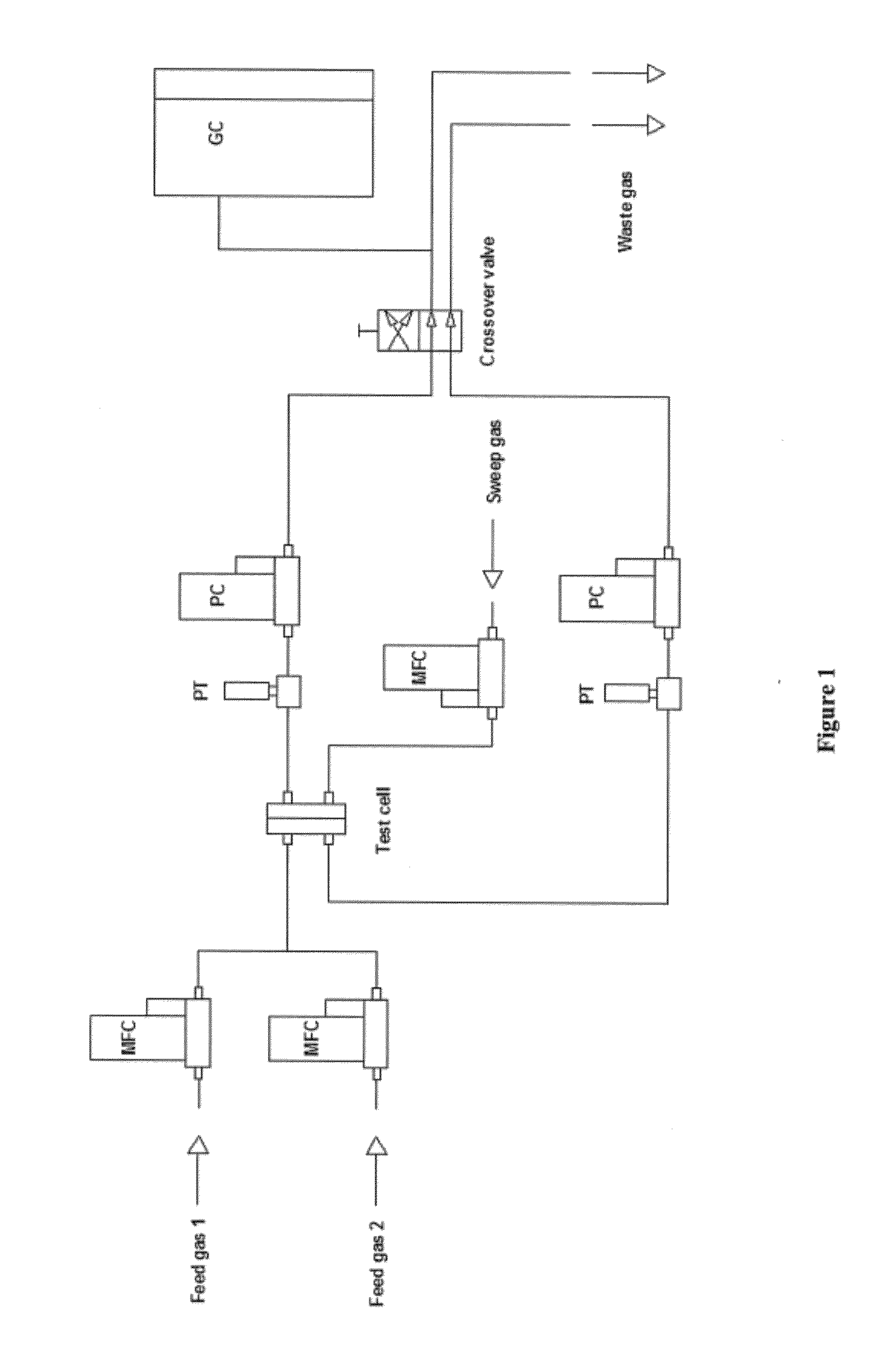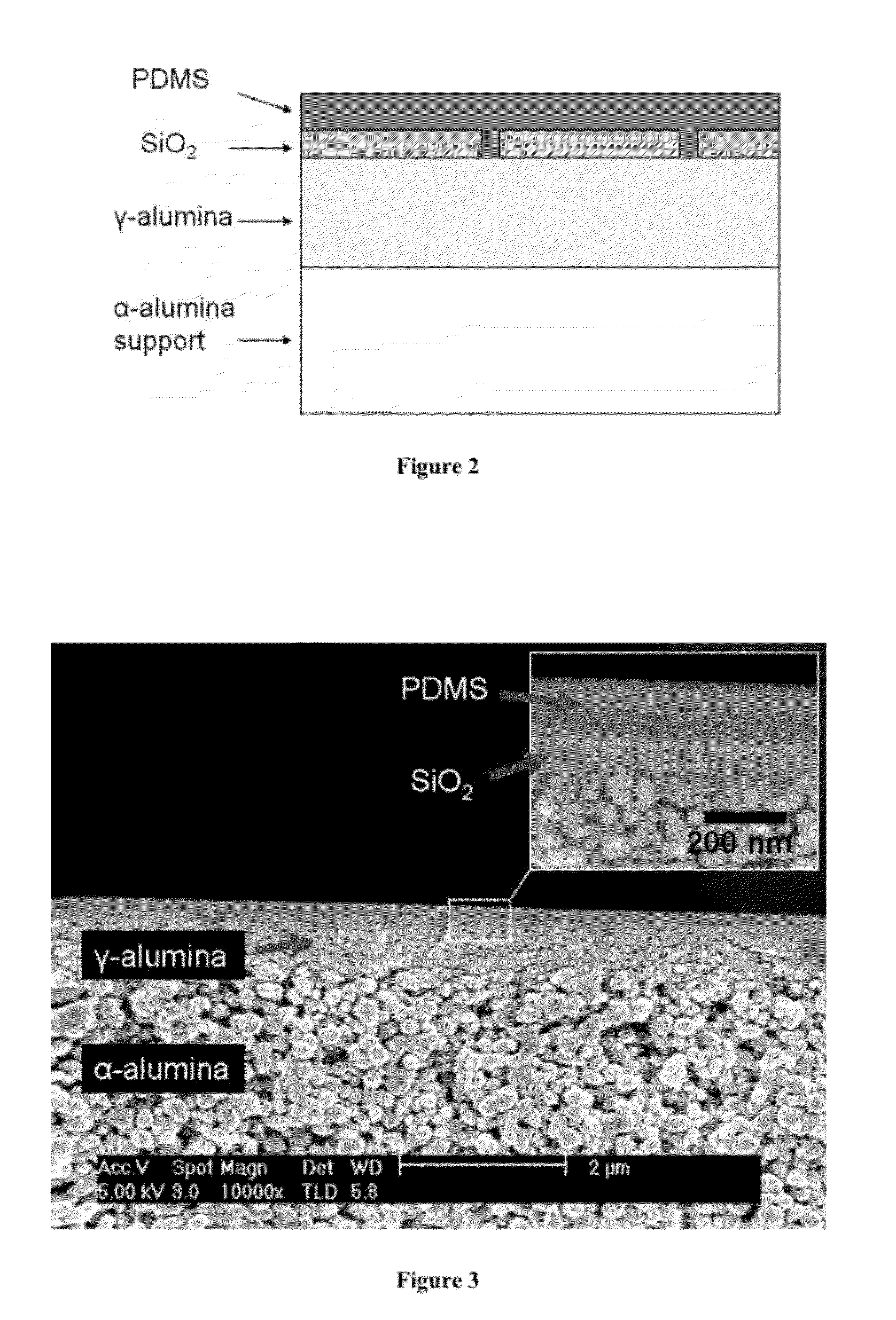Systems, compositions, and methods for fluid purification
a technology of fluid purification and composition, applied in the field of membrane structures, can solve the problems of limiting reproducibility, stability, separation performance of membranes, and difficult to get a defect-free interface between layers, and achieves high permeability, flux, selectivity.
- Summary
- Abstract
- Description
- Claims
- Application Information
AI Technical Summary
Benefits of technology
Problems solved by technology
Method used
Image
Examples
example 1
γ-Alumina-Polysulfone Composite Membrane (from an Aqueous Sol) Covered by a Poly(dimethylsiloxane) (PDMS) Defect Abatement Layer
[0080]A Boehmite sol in water with ˜1 wt % concentration was prepared by hydrolysis of aluminum tri-sec-butoxide (ATSB) at 90° C. in a mixture with an ATSB:H2O molar ratio of 1:100, followed by peptization and purification (T. A. Kuzniatsova, M. L. Mottern, K. Shqau, D. Yu, H. Verweij, “Micro-structural optimization of supported γ-alumina membranes,”J. Membrane Sci., 316 [1] 80-88 (2008).). 1 mL sol was spin-coated on a polysulfone support (molecular weight cut-off of ˜50 kDa) placed on a thin circular metal plate, followed by overnight drying at room temperature, and rapid thermal processing (RTP) to transform Boehmite to the γ-alumina phase. This treatment was carried out 3× with spin coating conditions as follows: 1) 500→3000 rpm, 2) 500→1700→3000 rpm, and 3) 500→1700→3000 rpm. The sol was spread at 500 rpm during each coating, in the 2nd and 3rd treatme...
example 2
γ-Alumina-Polysulfone Composite Membrane (from an H2O / Iso-Propanol (IPA) Sol) and Covered by a Poly(Dimethylsiloxane) (PDMS) Defect Abatement Layer
[0082]A Boehmite sol in water with ˜1 wt % concentration was prepared by hydrolysis of aluminum tri-sec-butoxide (ATSB) at 90° C. in a mixture with an ATSB:H2O molar ratio of 1:100, followed by peptization and purification. It was dialyzed with water of pH ˜3.5 to remove any salts present. The sol was then diluted ˜0.4 wt % by adding IPA. The IPA addition resulted in better wetting of the polysulfone surface, and improved sol homogeneity. 1 mL sol was spin-coated on a polysulfone support (molecular weight cut-off of ˜50 kDa) placed on a thin circular metal plate, followed by overnight drying at 40° C. in H2O-saturated air, and rapid thermal processing (RTP) as in example 1 to transform the Boehmite to γ-alumina phase. After the sol was evenly spread on polysulfone, the spinning speed was increased from 250 to 1000 rpm in 10 sec, and kept ...
example 3
γ-Alumina-Polysulfone Composite Membrane from an H2O / Iso-Propanol Sol with Poly(Vinylpyrrolidone) (PVP) Addition, Covered by a Poly(Dimethylsiloxane) (PDMS) Defect Abatement Layer
[0084]A 0.4 wt % sol in water and IPA was made as in example 2. This sol was then mixed with a 3 wt % PVP-K15 solution in water of pH=2 in a volume ratio of 3 sol:2 PVP solution. Spin-coating with 1 ml sol, and RTP were performed as in example 2. The thus formed composite membrane was immersed in IPA at room temperature for 24 hours to remove the soluble PVP. The PVP addition had the effect of making the γ-alumina layer more porous and / or increase its pore size. The membrane was then dried for a couple of hours inside a clean hood to remove the volatile IPA. A PDMS defect abatement coating was applied as in example 1.
[0085]The permeation measurements were conducted as in example 1. A CO2 permeance of >151 GPU with a CO2 / N2 selectivity of >11 was obtained. A similar structure without alumina layer membrane g...
PUM
| Property | Measurement | Unit |
|---|---|---|
| pore size | aaaaa | aaaaa |
| thickness | aaaaa | aaaaa |
| thickness | aaaaa | aaaaa |
Abstract
Description
Claims
Application Information
 Login to View More
Login to View More - R&D
- Intellectual Property
- Life Sciences
- Materials
- Tech Scout
- Unparalleled Data Quality
- Higher Quality Content
- 60% Fewer Hallucinations
Browse by: Latest US Patents, China's latest patents, Technical Efficacy Thesaurus, Application Domain, Technology Topic, Popular Technical Reports.
© 2025 PatSnap. All rights reserved.Legal|Privacy policy|Modern Slavery Act Transparency Statement|Sitemap|About US| Contact US: help@patsnap.com



